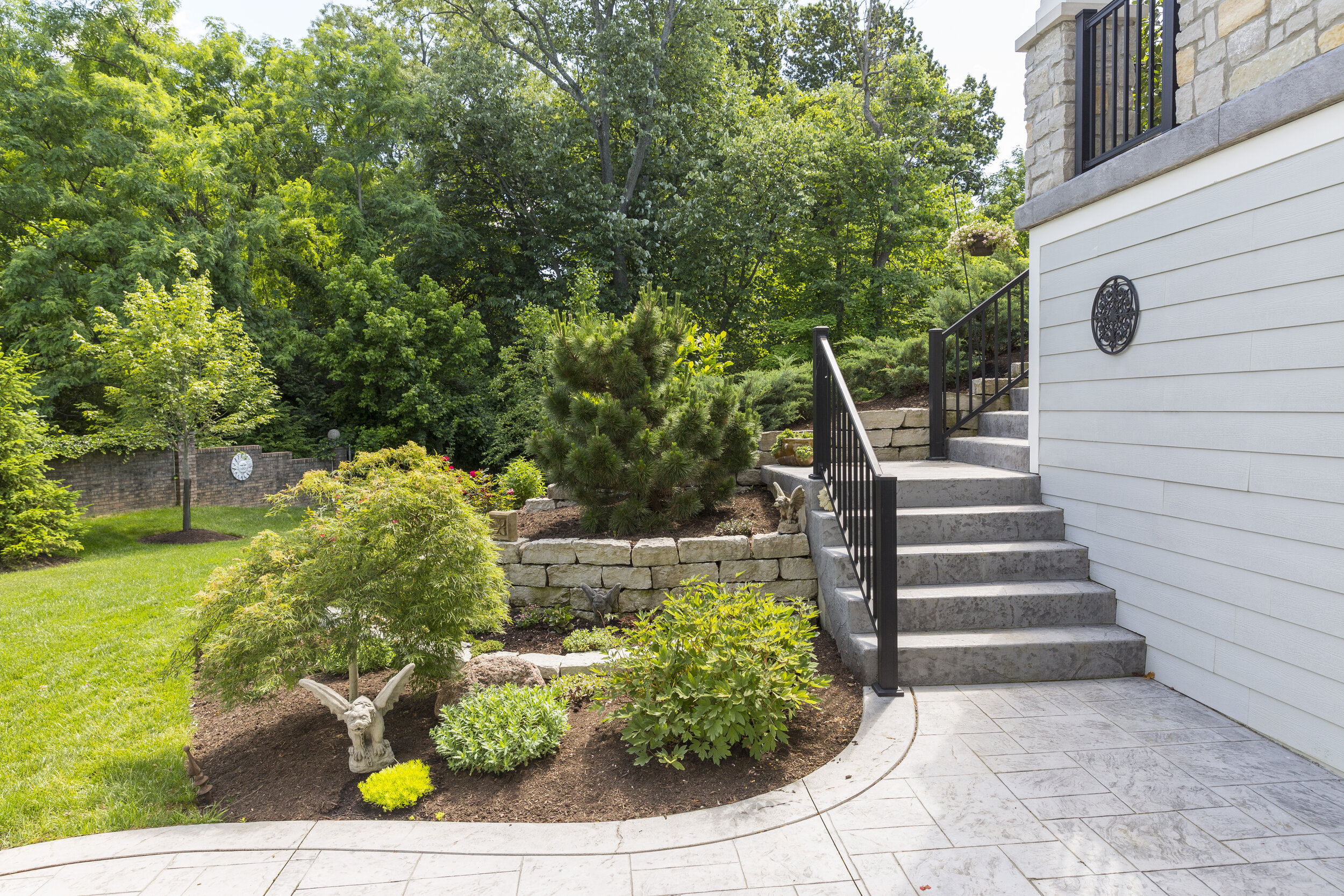A truly amazing backyard starts with a truly amazing backyard design. But it takes a thorough and comprehensive approach to turn a landscape dream into a reality. From function to flow to furniture, here are the aspects we always consider when designing a perfect backyard for our clients.
Function First
The first question to ask is simple: What do you want from your space? Do you want to host social gatherings and parties with all your friends and family? Do you want a way to spend more time with your family? Maybe you want to “get away” in your own backyard with a space designed for tranquility and relaxation. Or maybe you want a designated space for your favorite hobbies like gardening.
The desired function of a backyard is an important base to any landscape design. For social gatherings, you might want a full outdoor kitchen and decked-out patio or maybe a pool and firepit perfect for parties. For family time, you’d want plenty of seating like an outdoor dining area. You might also look for plenty of open green space for kids to play or a grill island for long-weekend holidays. A “home away from home” would benefit from tranquil water features like a pond or a fountain. Additionally, a reading nook and some benches and pergolas would provide designated spaces to unwind. For those with a green thumb who love to garden, you could have flower beds and a storage shed on your must-have list. A shed would also come in handy for other hobbies, and a gazebo would be perfect for outdoor yoga and exercise.
It’s also important to know how involved you want your backyard to be. How much upkeep are you willing to do throughout the year? Pools have to be maintained and reopened every year and certain plants are more high-maintenance than others. Conversely, if you want beds that require less maintenance, consider perennial plants that come back every year and an easy-to-sweep deck or patio.
Not-So-Empty Space
The next step in backyard design is to take stock of the space, firstly the size. How much space do you have to play with? No one wants an overcrowded backyard, and it’s important to think about the size plants and trees will reach as they mature. Also keep in mind what’s already there. Is there an AC unit or dryer vent you want to cover up or a giant oak tree you want to keep as a focal point?
Equally important is how the natural elements interact with the space. Pay attention to how the sun moves throughout the day and which areas get direct sunlight and for how long. A dining area that gets full sun for six hours a day might be a little too hot at mealtime. Likewise, your designer will need to know the best places for plants and where to put your full-sun shrubs versus your partial shade flowers. If you’re looking to add some shade, consider the best shady trees. Understanding prevailing winds in your backyard will help avoid placing your amazing firepit in a particularly breezy area.
Backyard design on a sloped site calls for additional forethought. A hillside could benefit from retaining walls, which can also create a focal point of your favorite plants. Take note of any areas where water collects and consider adding some way of drainage. If you live near a busy road or have close neighbors, you can add some needed privacy with hedges or fencing.
A Natural Flow
For an amazing backyard design, flow and focal points are vital. Not only should the design itself flow, but it should flow from inside your house to your yard. Consider your home’s exterior and match it. Contemporary, traditional, lavish, rustic — any and all of these styles can be complemented with a stunning backyard.
The best way to flow from one area to another is through paths. These can be paved or tiled to match your aesthetic, or go for a more natural look with stepping stones or crushed gravel. If you want to continue a natural look, utilize curves in your flower beds and other design choices. Straight lines make for a cleaner look and help draw the eye to focal points.
A great backyard is not only useful and practical but also a space that people enjoy looking at and using. Focal points allow for a cohesive look and highlight the thoughtful design. Consider the space as a whole and ensure one really amazing backyard rather than disjointed sections.
Before You Start
If you’re environmentally minded, a backyard can incorporate sustainability in its design. This includes planning water conservation and minimizing runoff as well as planting pollinator-friendly and native plants.
Before bringing the design to life, it is critical to ensure everything can happen according to plan. This means following local codes and regulations as well as checking that you won’t run into any electric, gas or other utility lines.
An Eye for Perfection
All of these factors go into Seiler’s thoughtful backyard designs for our clients. From timeless English gardens to modern outdoor kitchens and tranquil reading nooks to exciting pools, any dream can go from design to reality.
If you already have some design ideas for your backyard, contact us today and let’s talk about all your options.



























